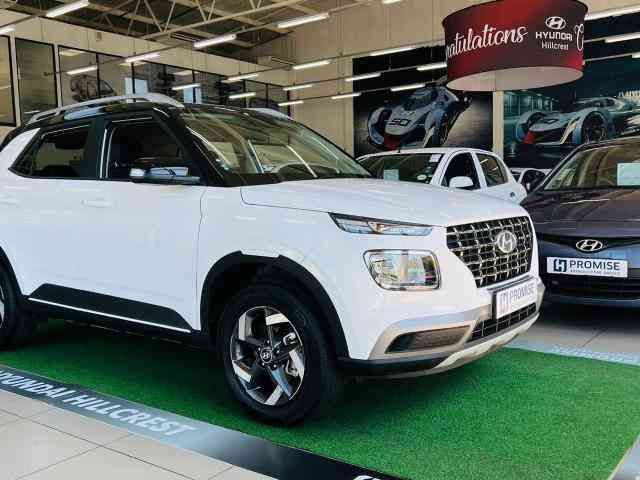
AS part of a mid-cycle update, the popular Hyundai Venue was given a botox treatment. The tried-and-tested drivetrain and chassis complement the new style, although they are not faultless.
Customers searching for a reasonably priced, comfortable crossover that is equally adept on the daily commute as it is on the weekend excursion, have found a home with the Hyundai Venue.
Since its release in 2019, over 20 000 Hyundai Venues have found homes in the driveways and garages of Southern Africa, thanks to its appealing proportions, cheap operating costs and an exceptional warranty.
I have no idea why it is not on our Zimbabwean streets. I have not encountered one. Maybe the dealership feels it will compete with the Hyundai Creta that they offer.
A model will typically have a facelift halfway through its existence, as is normal in the automobile industry, helping to maintain its relevance to the current market. This helps all models maintain their value a little bit better because too many updates to a brand-new edition detract from the perception of value of the models that came before them. It is time for the Venue to get a makeover in 2023 and get a brand-new appearance. The package is notably different, but the bones are the same.
Exterior design
The big and powerful grille is the primary visual distinction between this new facelifted model and its predecessor. A dramatic new piece that is squared off and more in keeping with the design language we have seen in models like the Palisade, Creta, Tucson, and one we will soon see in the Santa Fe replaces the 'Y-shaped' grille of the initial edition. This grille has inverted grille parts that gradually get smaller as they descend the face of the grille, which Hyundai refers to as cascading chocolate boxes.
Split-element illumination that includes thin strips that rest up high and include the park lamps and indicators surrounds this grille on both sides. The daytime running lights (DRLs) and LED headlights are located lower on this fluid model.
- Organisation of Petroleum Exporting Countries
Keep Reading
The rear of the 2023 Venue is completely redesigned, in contrast to how a facelift often only sees modest alterations made to the front end. A continuous taillight feature that extends from side to side, connecting the appealing new taillights, completes the horizontally-themed back bumper. The hatch door's shape has also been altered to include a broader lower portion. This makes it easier to load heavier objects and facilitates access to the back.
Interior design
The appearance of the vehicle has undergone the most of the improvements for the current model year, but the interior has mainly not changed.
That is actually a good thing since, given the price tag, the Venue's interior is actually quite lovely. You will not receive Rolls Royce interior accoutrements, but you also will not pay Rolls Royce costs.
As a result, a lot of plastic is used, but the general fit and finish is still excellent, especially if you have small children who have not yet learned the worth of things.
The only section that will pleasantly surprise you is the back. You will initially marvel how Hyundai was able to squeeze so much space into a car with such a compact overall size, but the rear legroom is more than generous. The back seats can be folded down to form a 60:40 configuration, expanding the boot's 343-litre capacity even more. This enables you to pack your vehicle in a variety of ways.
Comfort and convenience
The compact, light-weight Venue does a commendable job of coping with our regional road conditions, but it will never glide along the pavement, absorbing every shock and smoothing out every crease.
Small flaws in the road surface, which add to overall tiredness, are made hardly noticeable by the broad tyre profiles.
I have driven cars that cost four times as much that struggle to do this. The disadvantage is that the greater undulations are still perceptible, and because the Venue is lightweight, the tarmac's ebb and flow influence the entire body. If you would rather, the device has Bluetooth capabilities, and steering-wheel controls enable the device to be operated safely. The Venue offers a 12-volt outlet, USB, and USB-C ports for peripherals and charges. Although only N Line models have automated climate control, the air conditioning is manual. However, there are air vents in the back to keep the passengers in the second row comfortable.
Performance
The two engines that were used to power the original Venue are still in use today. A 1.2-litre, 4-cylinder, normally aspirated gasoline engine or a 1.0-litre, 3-cylinder, turbocharged gasoline engine are your options. Although the 1,2-litre produces 61 kW and 115 Nm of torque, my test vehicle was the 1.0-litre turbocharged type. With 88 kW and 172 Nm of torque, this engine is significantly nimbler than its bigger sibling. Hyundai claims a 0 to 100 km/h sprint time of 11.4 seconds, which will not win any races but will manage the highway shuffle beautifully and keep up with traffic just fine.
This engine is connected to a 7-speed dual clutch transmission. This is done with the intention of shortening gear changes and improving fuel efficiency, however it actually results in jerky shifts and a rough ride. This oversight ruins the entire experience.
The programming of the shift points is inadequate and too frequently causes the car to lose boost, which causes a sluggish pull-away. This poses a particular risk when crossing in front of incoming traffic. The fact that one had to learn to drive it is unfortunate.
Fuel economy
One would anticipate the somewhat modest 1.0-litre engine to be able to reach the manufacturer's promises of 6.9 l/100km. Gearbox programming is expected to help with fuel consumption.
Instead, the average everyday commute will result in figures of about 10 l/100 km, and only if you head out onto the open road and maintain a reasonable speed will you see that figure fall into the 8s.
My highest score was an 8,2 after a lengthy interstate drive. The claimed range from a single 45-litre tank is 652 kilometres, although at the speed I was traveling, you would only cover about 450 km.
Safety
The Venue's safety features have not altered, and if you are determined to keep as safe as you can, you should get the Fluid version. In addition to ABS antilock brakes, Electronic Brakeforce Distribution (EBD), and Emergency Brake Assist (EBA), the Fluid variants include six airbags. The ISOFIX child seat anchors are located at the back, and the seatbelts are equipped with pre-tensioners to pick up the slack in the event of an accident.
Verdict
The style of the Venue in its original form did not appeal to me, and despite being reasonably priced, it never really captivated my attention. I have since changed my view after driving this improved version.
Most of the time, I was able to overlook the subpar gearbox programming thanks to the cosmetic improvements, general usefulness, and ample room; as a result, I did a lot of driving in Sport mode to make up for the gearbox's subpar performance.
It is simple to understand why it is so well-liked, but given how fierce the competition is, I worry that if I were looking to purchase this high-spec version, I would look elsewhere for my money.
But once you're willing to put up with some of the features, who knows you might consider it.
andrew@muzamhindo.com.






